
16-11-2025 21:09
 Robin Isaksson
Robin Isaksson
Anyone recognize this acc. to pictures.? Found on

14-11-2025 16:26
 Marian Jagers
Marian Jagers
Hello everyone, On dead wood of Cytisus scoparius

15-11-2025 23:22
Mario FilippaHello,this is what I think to be Hymenoscyphus mac

15-11-2025 20:25
 Riet van Oosten
Riet van Oosten
Hello, Found by Laurens van der Linde, Nov. 2025

14-11-2025 18:31
 Lothar Krieglsteiner
Lothar Krieglsteiner
Hello,can somebody provide me with a file of:Rothe

12-11-2025 09:25
 Viktorie Halasu
Viktorie Halasu
Hello, I need help with a pale terrestric Pseudom

11-11-2025 20:16
Bohan JiaHi, lastly I have found these tiny yellow decayin

09-11-2025 13:20
Hello.A tiny ascomycete, appearing as erupting gra
 found 11.3.2020, Germany, Baden-Wuerttemberg, Gschwend, "Bergsee", on soil in a small canyon on calcareous soil (near a lying trunk).
found 11.3.2020, Germany, Baden-Wuerttemberg, Gschwend, "Bergsee", on soil in a small canyon on calcareous soil (near a lying trunk).Unfortunately, the specimen was not fully ripe. The season of fruiting is strange, so perhaps there is a hint for me?
(Unripe) spores about 14-16/8,5-10 µm
Best regards, Lothar

Bestw

thank you very much for your suggestion. We will see if there are other opinions - or same ones.
Best regards, Lothar

Eric

thank you very much - this seems to be a good hint, at least near to the solution.
Unfortunately I do not have this:
Hansen, Sandal & Dissing, Nordic Jl Bot. 18(5): 612 (1998)
Best regards, Lothar
P.S. But even if it is exogelatinosa and the case is solved - there remains the fact that it grew in spring, not very typical for "normal" ectomycorhizal fungi (what it likely should be ..?).
Do you mean "New and rare species of Pezizales from calcareous woodlands in Denmark"?
Can I send to priva if you want?
Mirek



eric.bionne@gmail.com
Merci beaucoup
Eric


Yes, it should be found again, better ripe - or sequenced. For the meantime I name it cf. exogalatinosa(us)
Best regards, Lothar
It seems to me that the temperature in the refrigerator is too low and there is no light, which is not good. I put it in the fridge only when I don't have time for microscopy and I want the fruiting bodies not to overripe.
Greetings.
Mirek

you are surely right - it was wrong to handle the specimen this way. Next time ...
Best regards, Lothar
The discussion in this forum made me reflect. I do not know P. exogelatinosa by nature, so this species is very difficult for me to identify.
I once asked you about my collection which I called P. pauli but you decided that it is not this species.
While researching this collection, I did not pay attention to the gelatinous layer on the ectal ex. I thought that I did not make the preparation accurately and that is why the view is so blurry. However, several times I made the preparation with the same effect, having the impression that some gel covering the fruiting body was disturbing my observation, so I even tried to rinse the preparation several times. Still ectal ex, she was barely visible.
Then don't you think this collection could be P. exogelatinosa ??
The only thing I don't like are the spores. For me, their length was slightly shorter than what Hansen says. The second measurement taken was slightly different:
Me = 15.4 × 9.6 µm; Qe = 1.6
15.70 9.32
14.93 9.69
15.55 9.50
15.26 10.36
15.37 10.14
16.43 9.88
15.52 9.13
15.56 9.81
14.72 9.09
15.22 8.87
Perhaps they were not well matured?
I am posting a link to my website again and a few more pictures of ectal ex.
greetings
Mirek

Habitat would rather fit too?
Ascomata grew on the side of the road, on a gravel bed. Very little humus content. Rainwater collected in this place, so it stayed wet for a long time. They grew together with Ascobolus behnitziensis.
Until I get to know this species better, I will temporarily change her name to Peziza cf. exogelatinosa.
Thank you so much, Nicolas!
Mirek

this is what looks best by now - and I consider it fully. I saw very fine warts on the spores, but it was not possible for me to get in on the fotos satisfactorily. Everything seems to fit, including the vernal growth. But - to cite Nicolas - to be sure it should be sequenced. As I have no possibility to do this (or better let it do) I will have to cope with the "cf"-determination.
It seems to me as if the species of this complex are very close to each other.
Thank you very much for your contribution!
Best regards, Lothar


I will write you a mail. Thanks and best regards, Lothar


This new genus also contains H. retrocurvata (syn. Peziza retrocurvata). These species are especially characterised by pluriguttulate ascospores.
Lothar, I hope you could find it again and more mature.



thank you very much for the information. Unfortunately, the paper in the link is not for free. Does somebody have it?
So, there is a name for my fungus, super!
No, I could not find it again. It is January ....
I will try in some weeks. If I should be successful, I will tell you.
Best regards and thanks again,
Lothar
P.S A lot of thanks to Edouard, also, I already wrote this in private mails


thank you very much - I just downloaded and read a bit.
As it looks, the spores don`t develop more ornament as I observed ...
The ecology fits well, so I have a name :-)
Anyway, I will try to find it again.
Best, Lothar
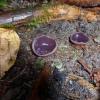
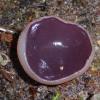
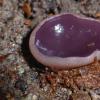



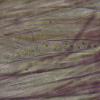
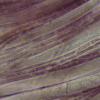

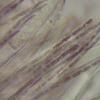
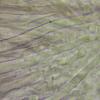

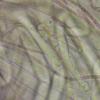


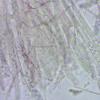

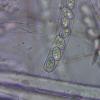
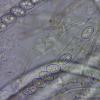
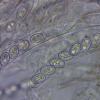


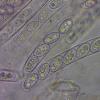

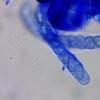
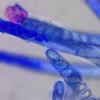


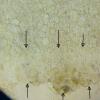
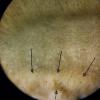


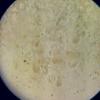
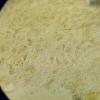
 Peziza-sp-ITS1F-4-0001.seq
Peziza-sp-ITS1F-4-0001.seq